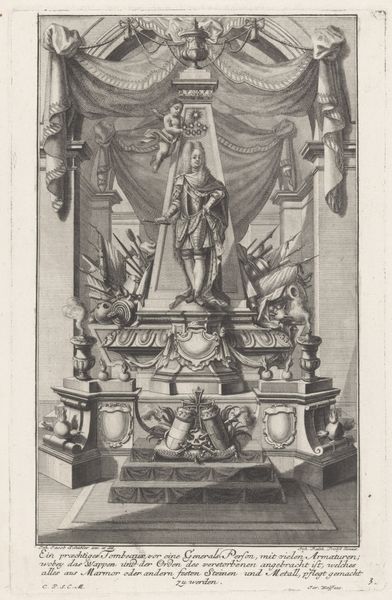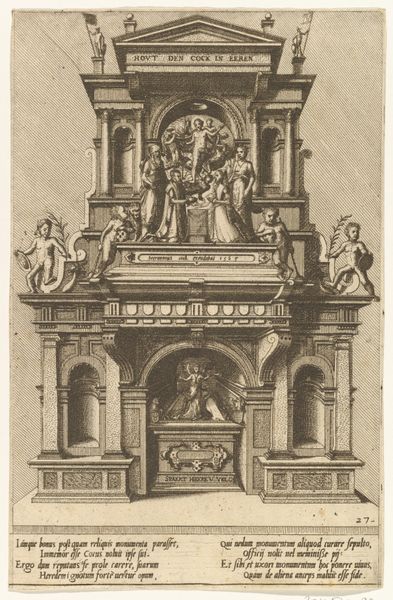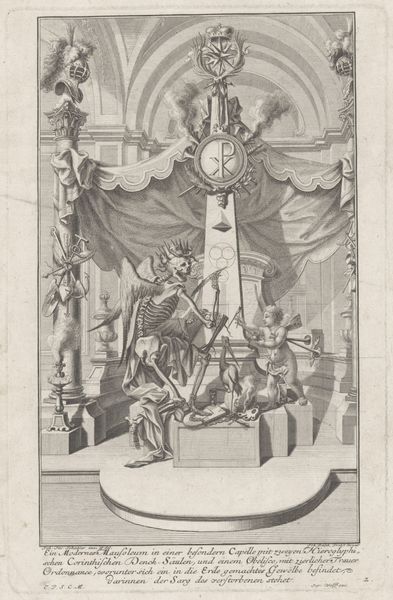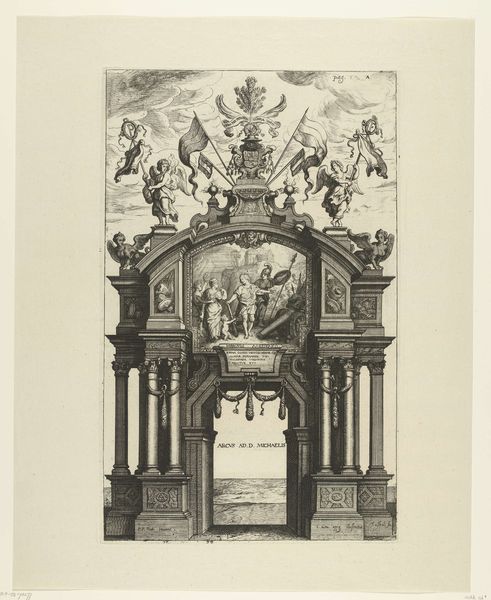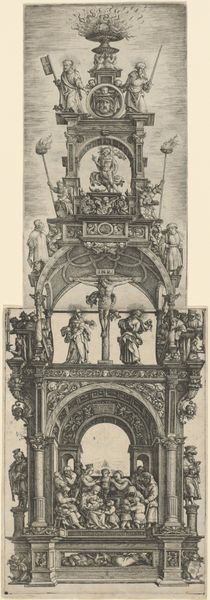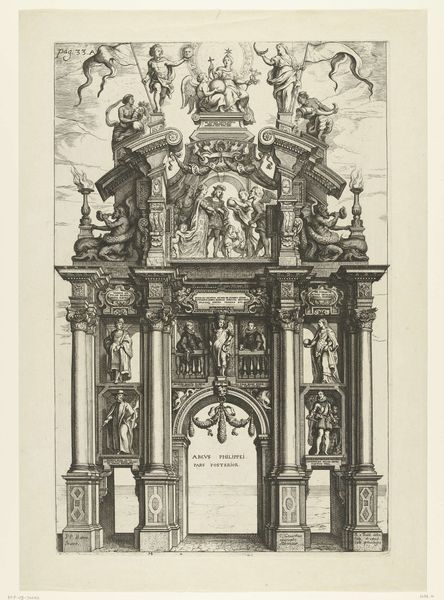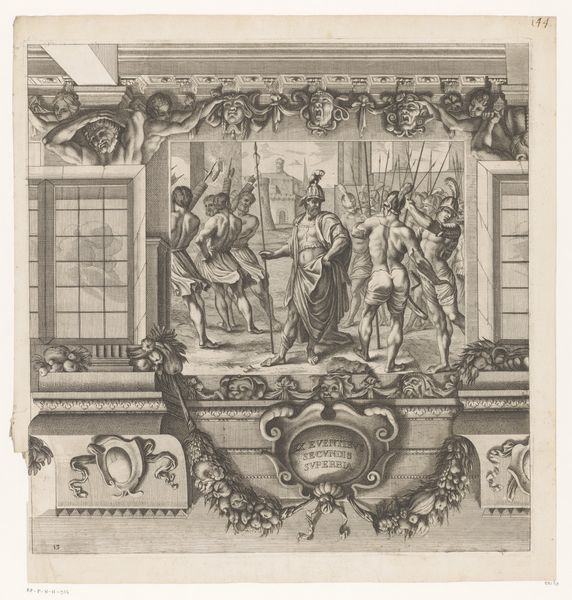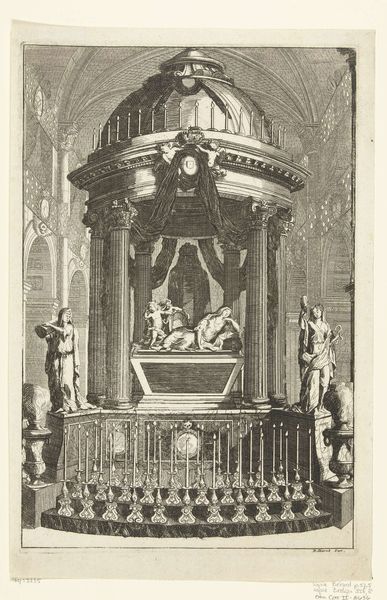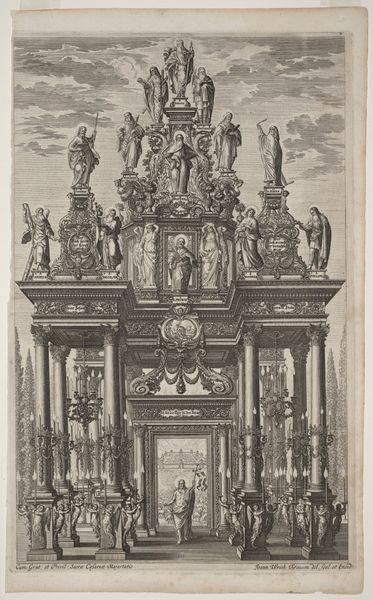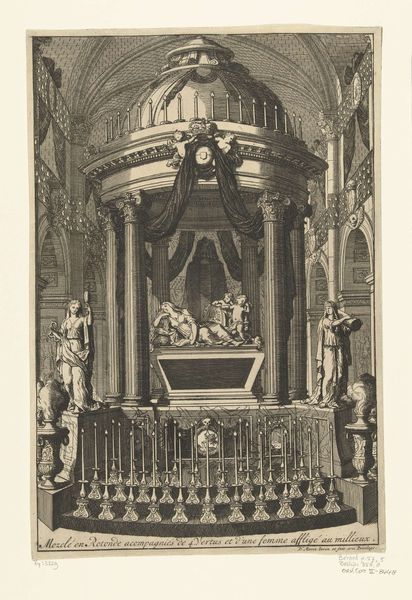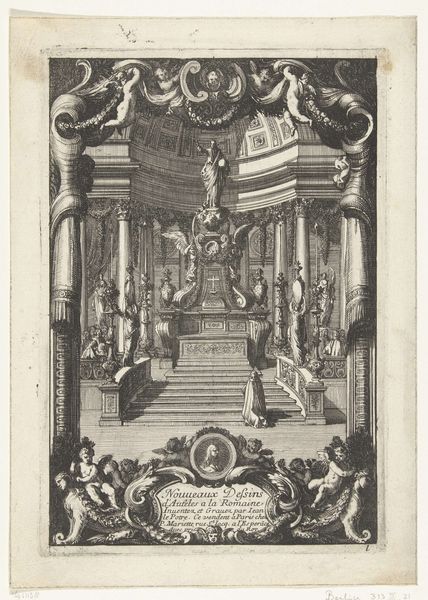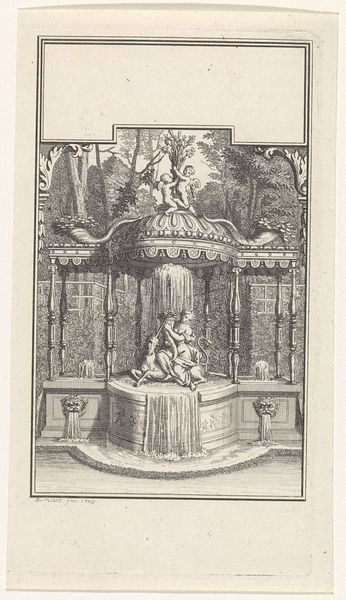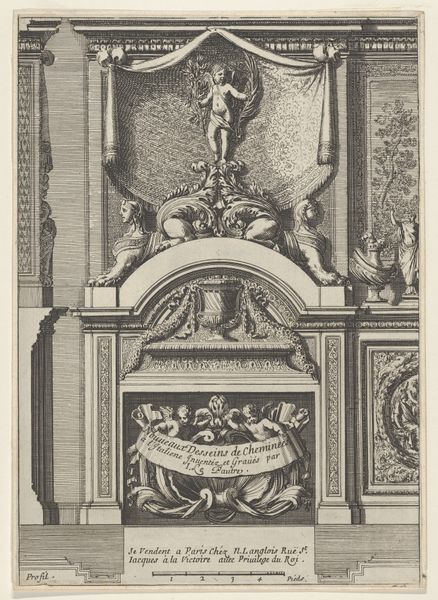
Tempel van Janus; intocht van Ferdinand te Antwerpen in 1635 (nr. 30) 1639 - 1641
0:00
0:00
print, engraving, architecture
#
baroque
# print
#
old engraving style
#
figuration
#
cityscape
#
history-painting
#
engraving
#
architecture
Dimensions: height 531 mm, width 454 mm
Copyright: Rijks Museum: Open Domain
Curator: The print before us is titled "Tempel van Janus; intocht van Ferdinand te Antwerpen in 1635 (nr. 30)", created between 1639 and 1641 by Theodoor van Thulden. It commemorates Ferdinand's entry into Antwerp. What strikes you about it initially? Editor: The density of the image! So much happening. There's a sort of theatrical layering effect. The central stage has figures spilling out, but above it is all ornamentation, suggesting a complex construction. Curator: Precisely. It's crucial to understand that this wasn't just an artistic representation; it documented ephemeral architecture—triumphal arches constructed specifically for the occasion. Antwerp wanted to make a grand gesture of loyalty to the Habsburgs. Editor: The materials of the actual arch are so relevant here, right? Wood, plaster, paint—these temporary displays would have transformed the city, changing people's relationship to their surroundings temporarily. What were these engravings printed on? That too shifts context. Curator: Engravings like this, distributed widely, became essential tools of propaganda. They spread the image of Habsburg power and influence far beyond Antwerp. Consider the Temple of Janus motif – a deeply historical reference, associating Ferdinand with ideas of peace and prosperity under Habsburg rule. Editor: Look at the depiction of labor. Notice the way bodies are posed and placed - some figures seemingly struggling and creating some turmoil to break free through an open doorway? I would be curious to see the preliminary drawings if any exist. How did van Thulden develop these figures? The social context of artistic production here feels so important. Curator: Indeed. Van Thulden oversaw the artistic production, making him central in visually representing the Habsburg authority in the region. Editor: Knowing about that historical function changes my interpretation, the entire thing almost starts to seem oppressive to me in some ways, since it highlights how public space could be transformed and manipulated to project and reinforce specific power structures. Curator: It’s a potent reminder of how deeply intertwined art, power, and politics have always been. Editor: Absolutely, it highlights both the material production of the art, but it brings the context of propaganda to life with a tangible item, an item that represents something ephemeral to something solid that now represents much more history behind it.
Comments
No comments
Be the first to comment and join the conversation on the ultimate creative platform.
